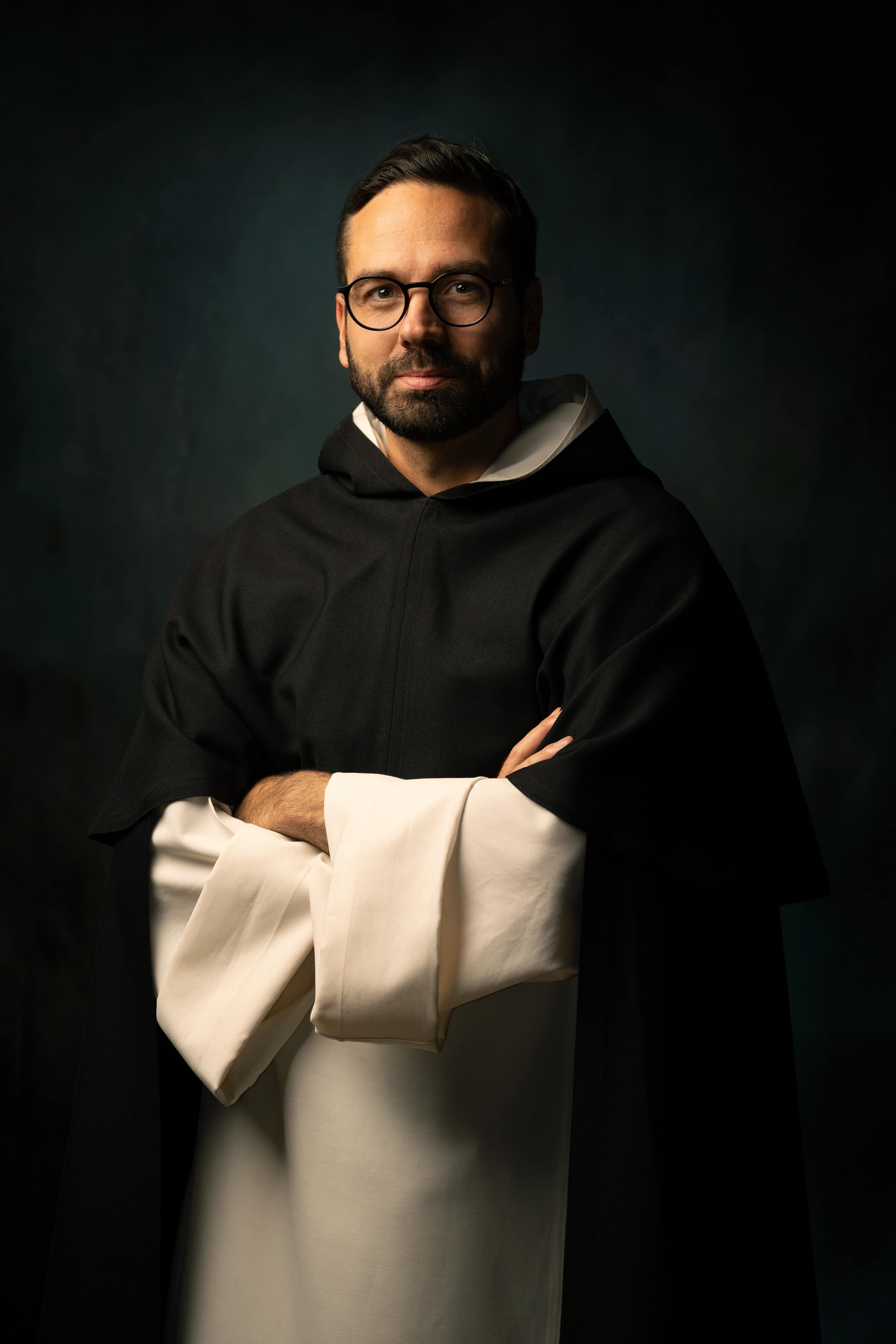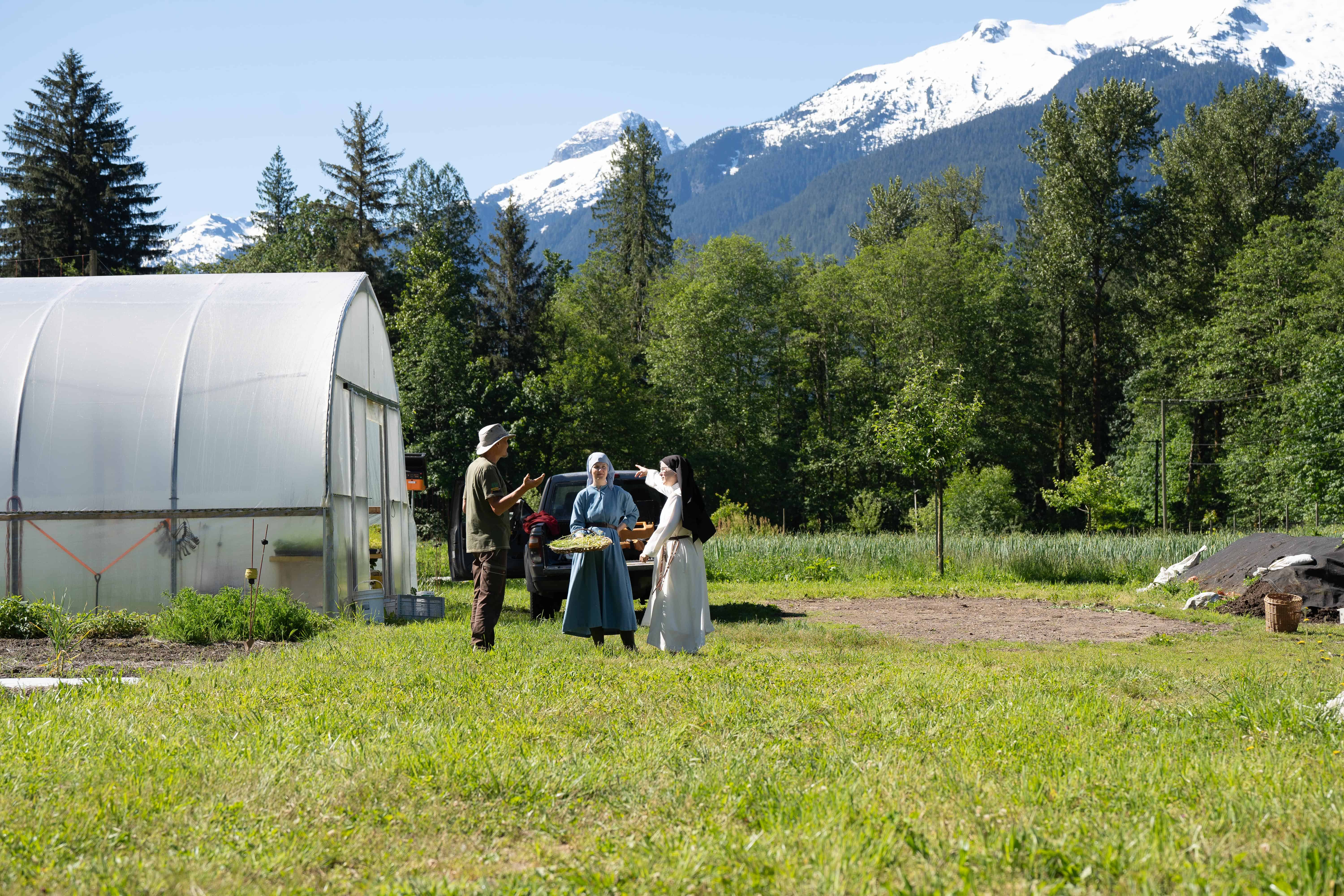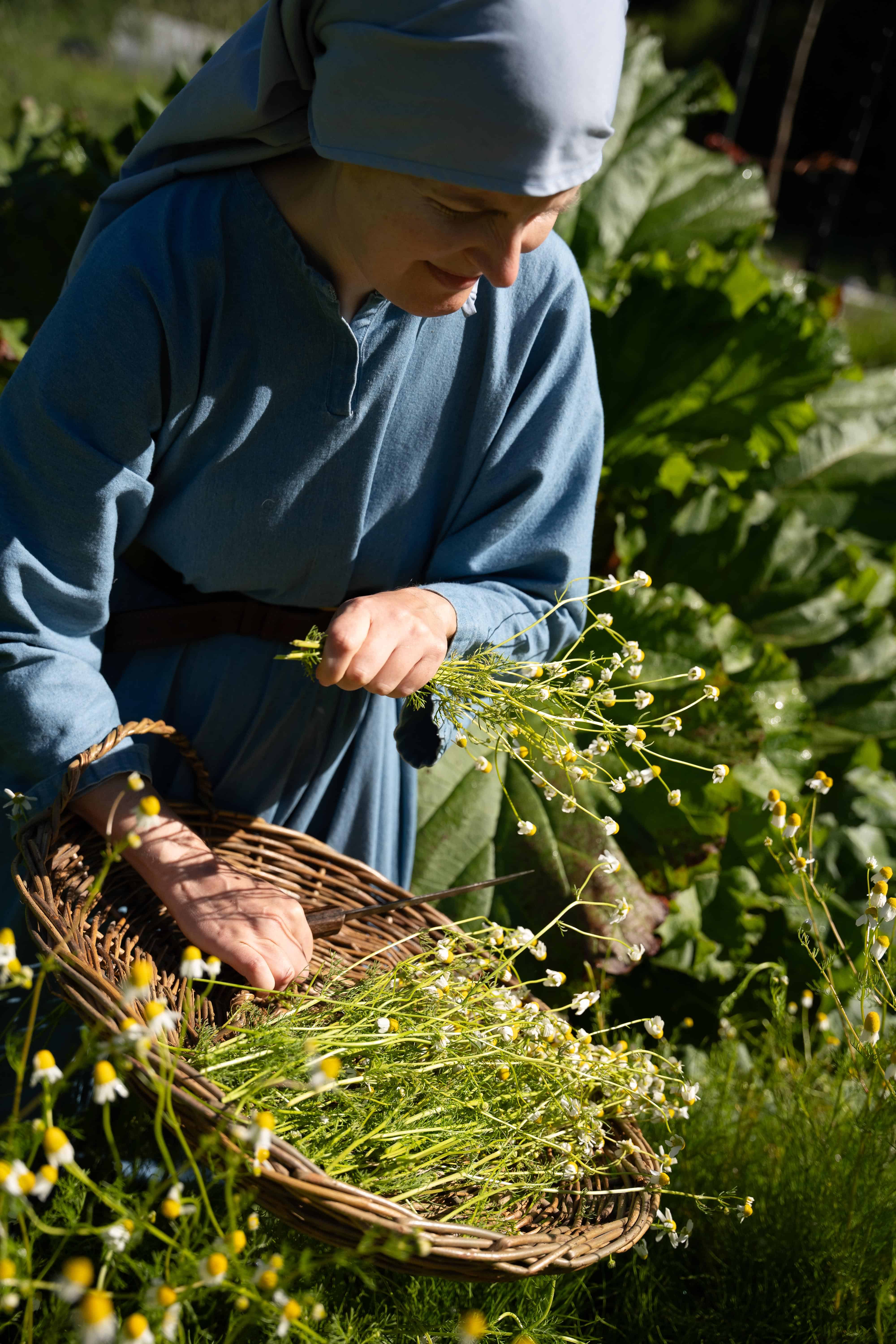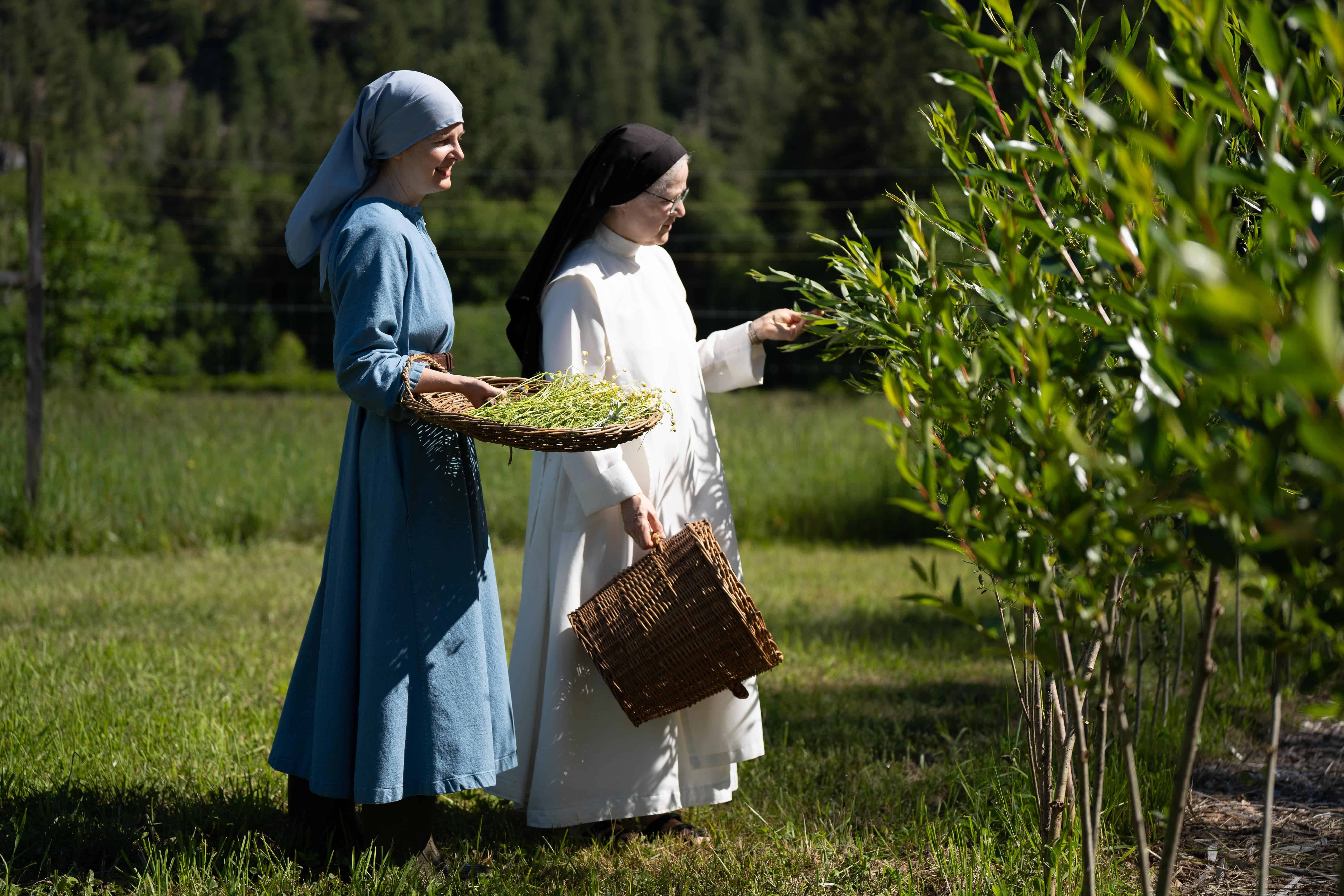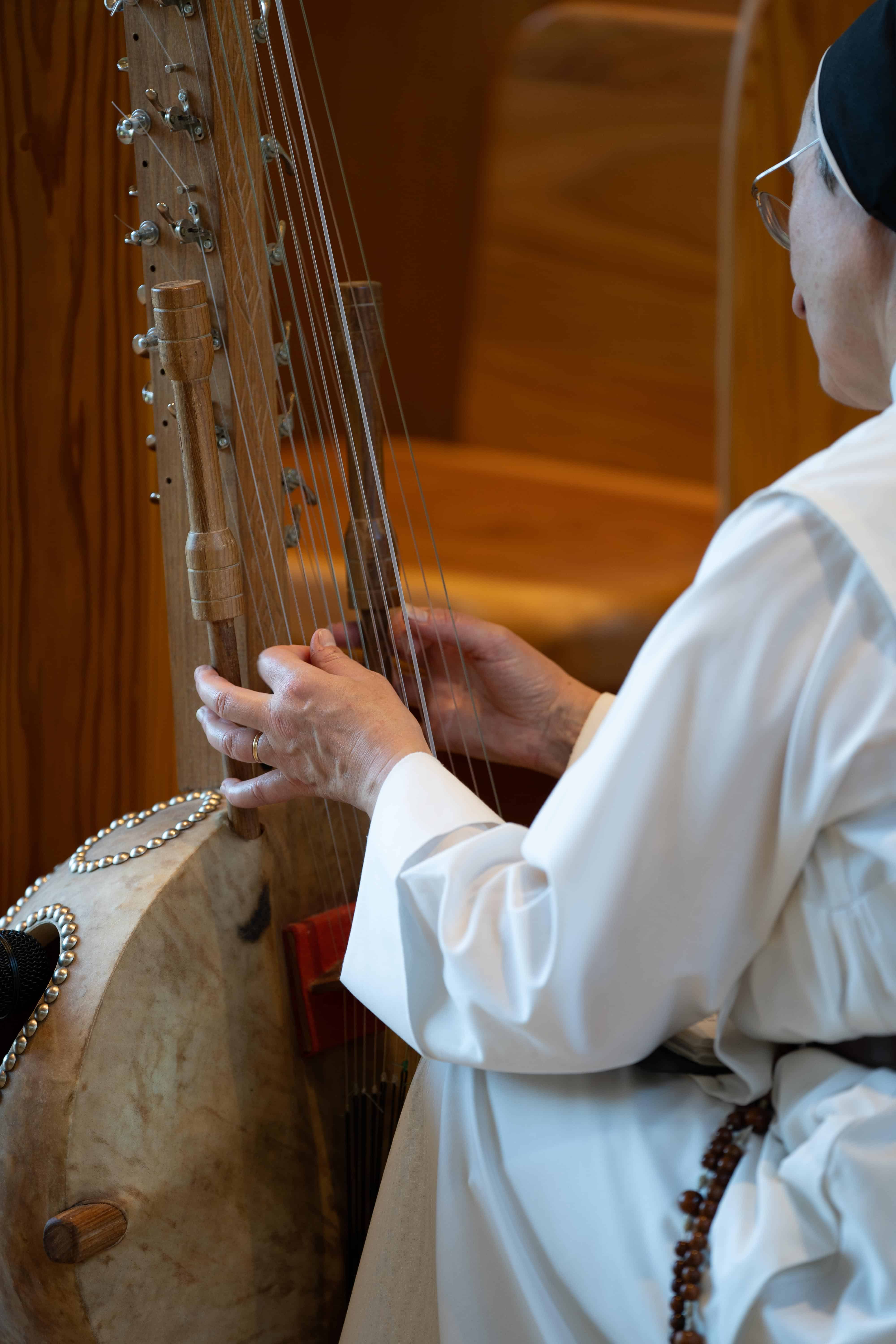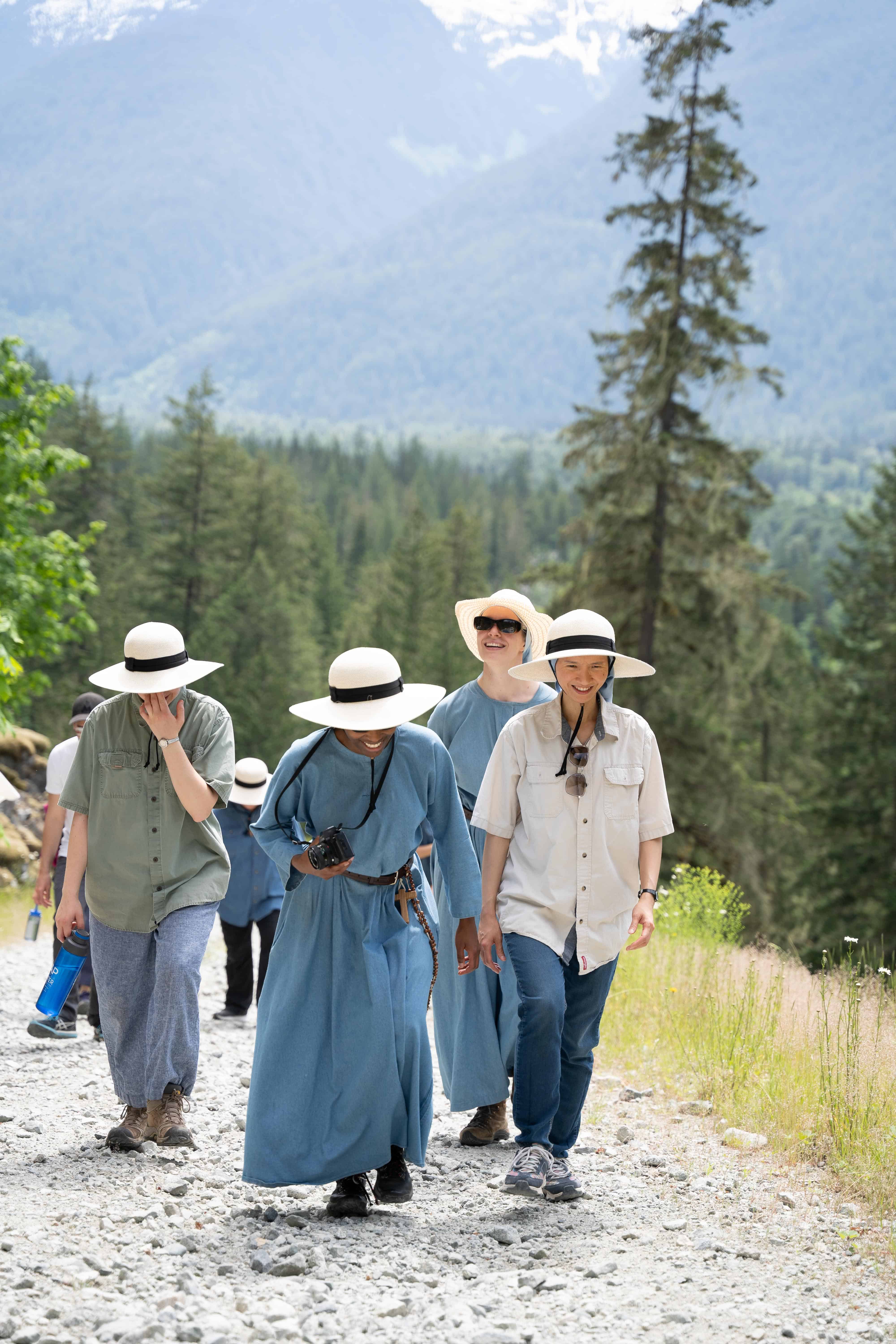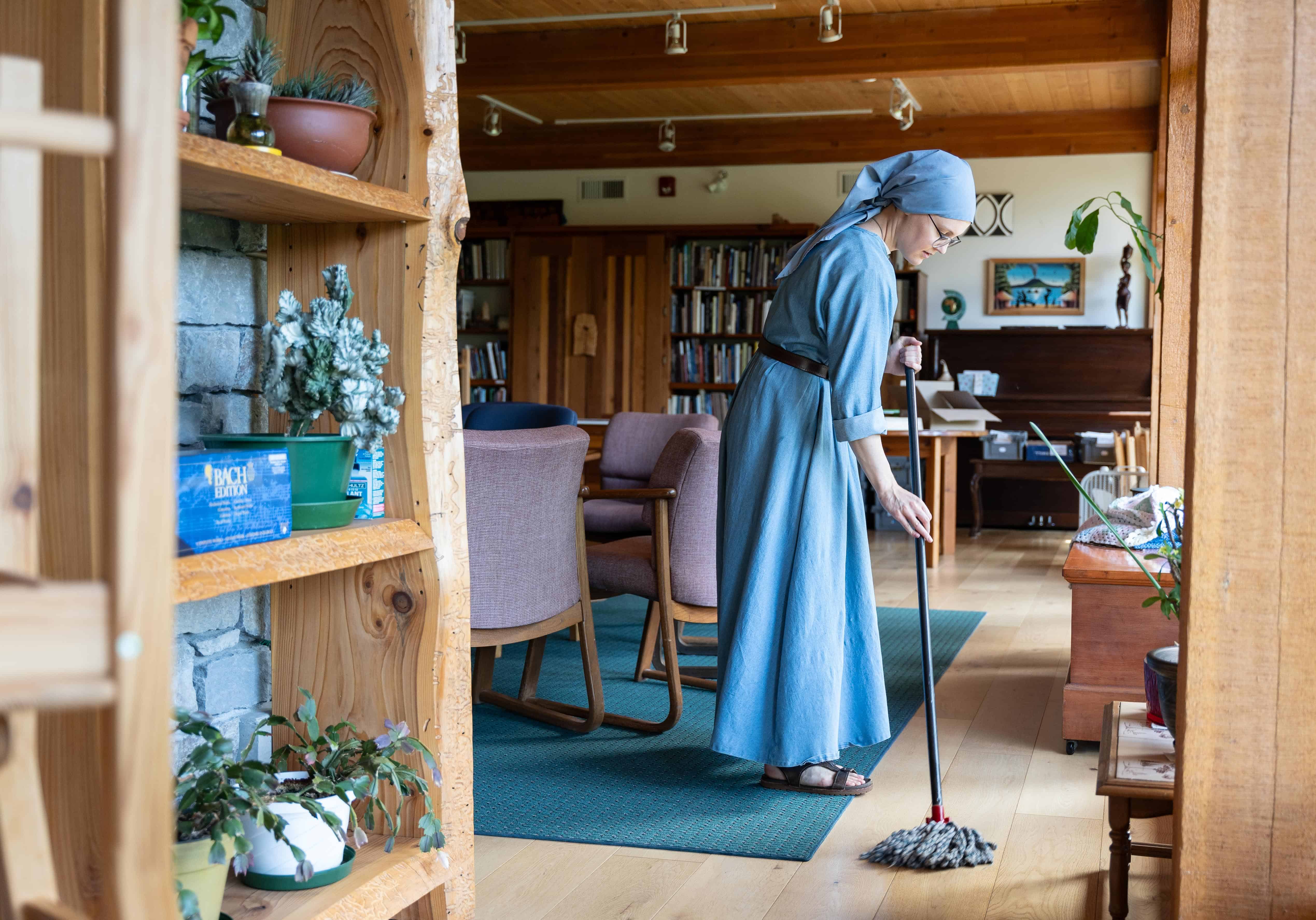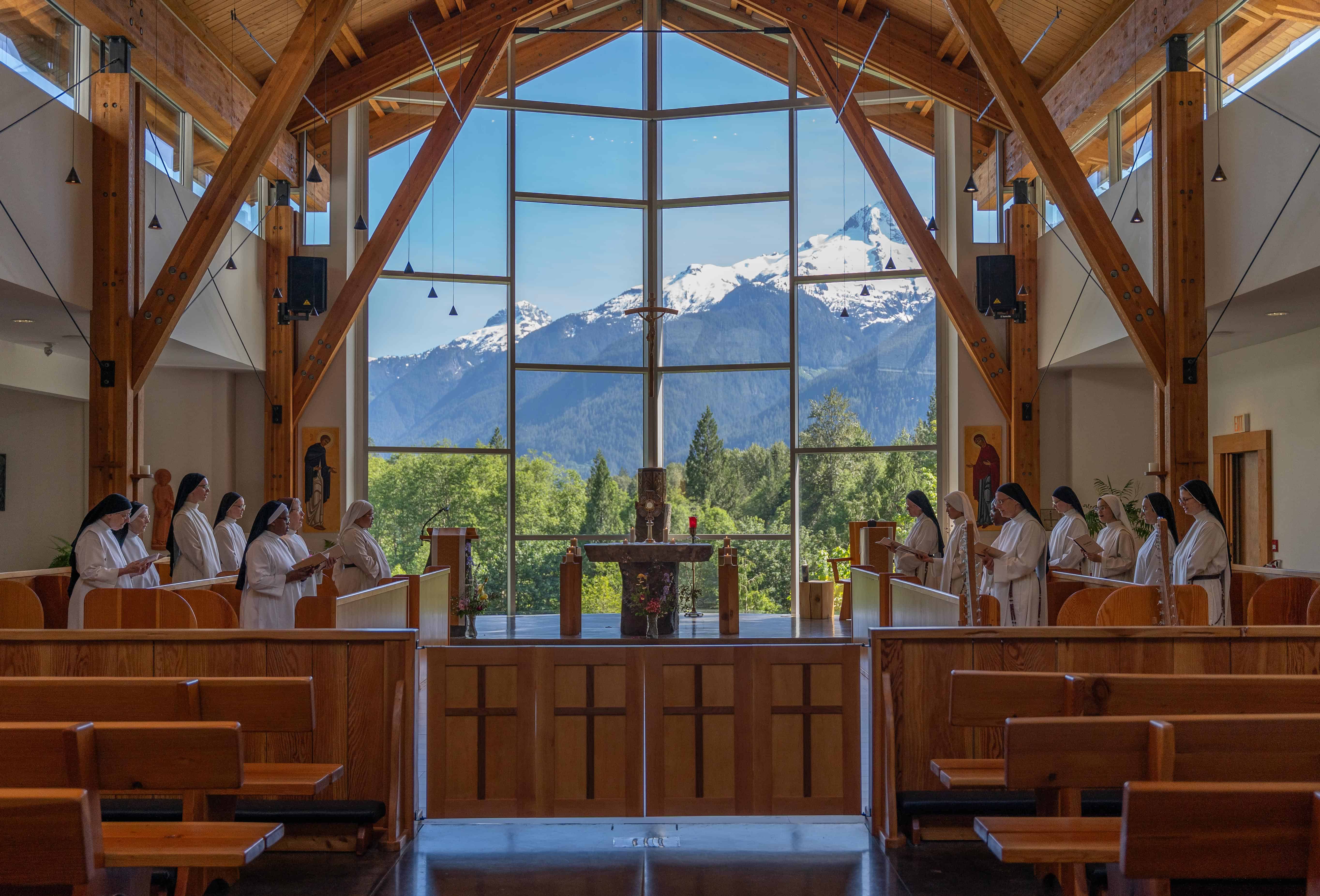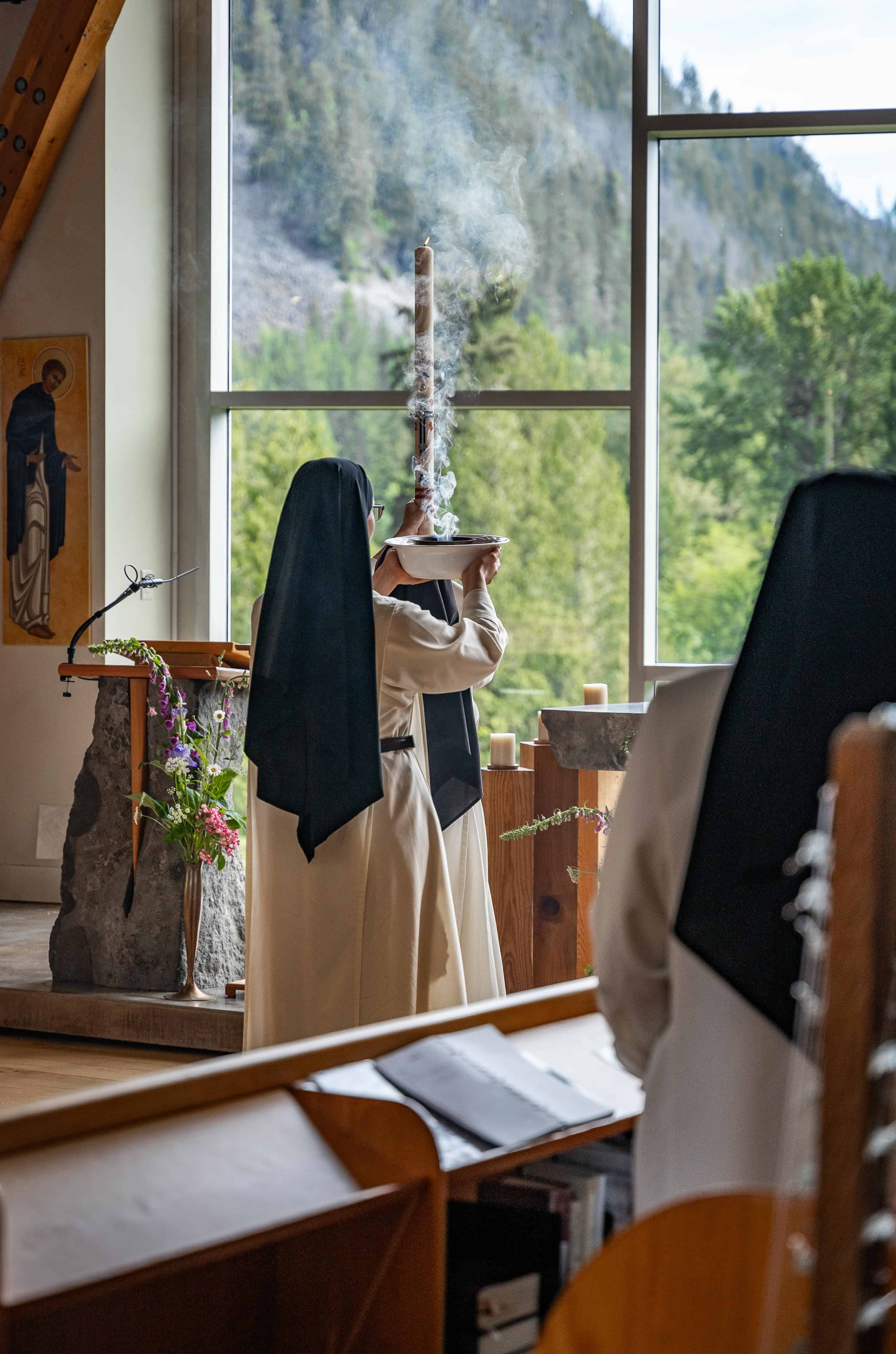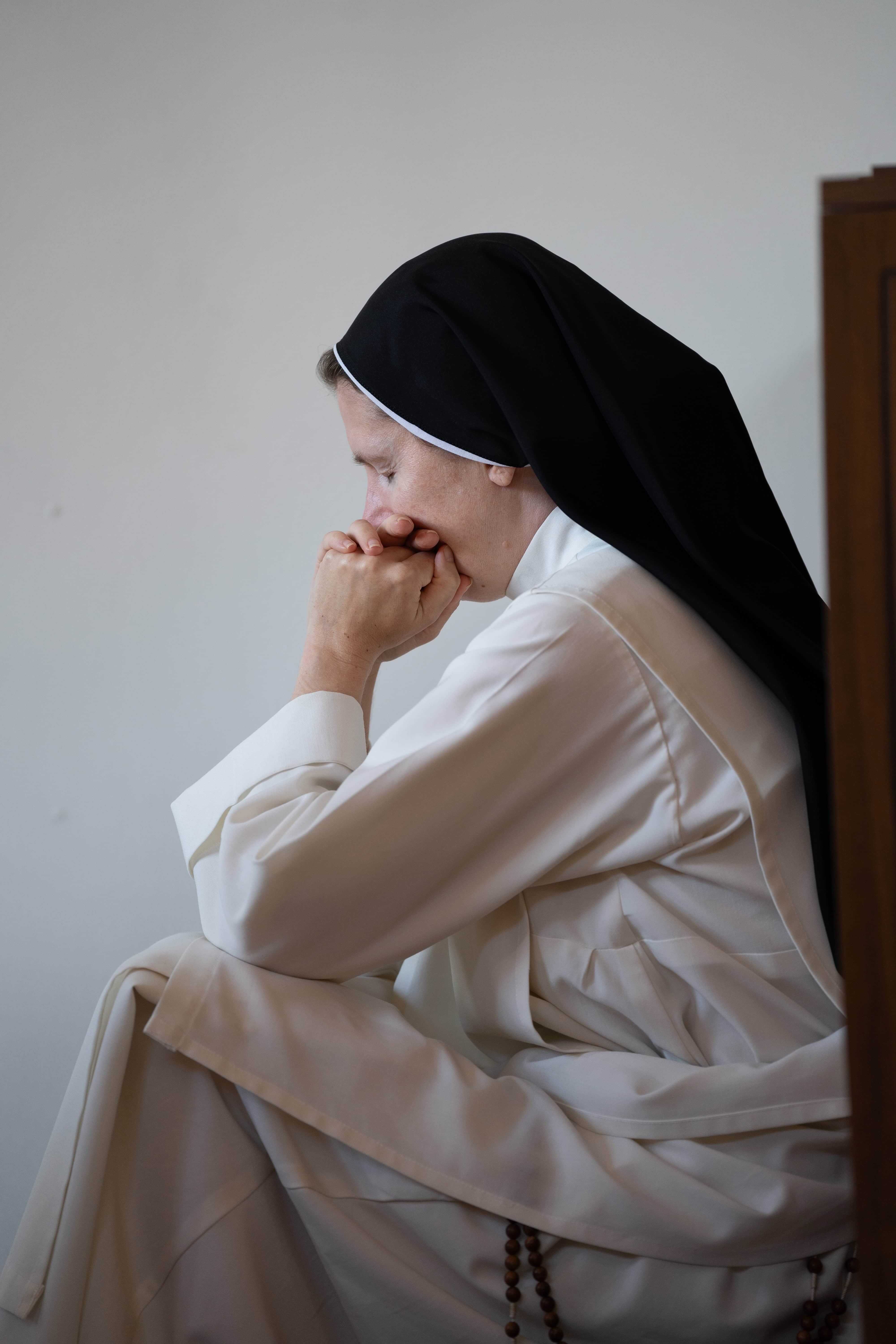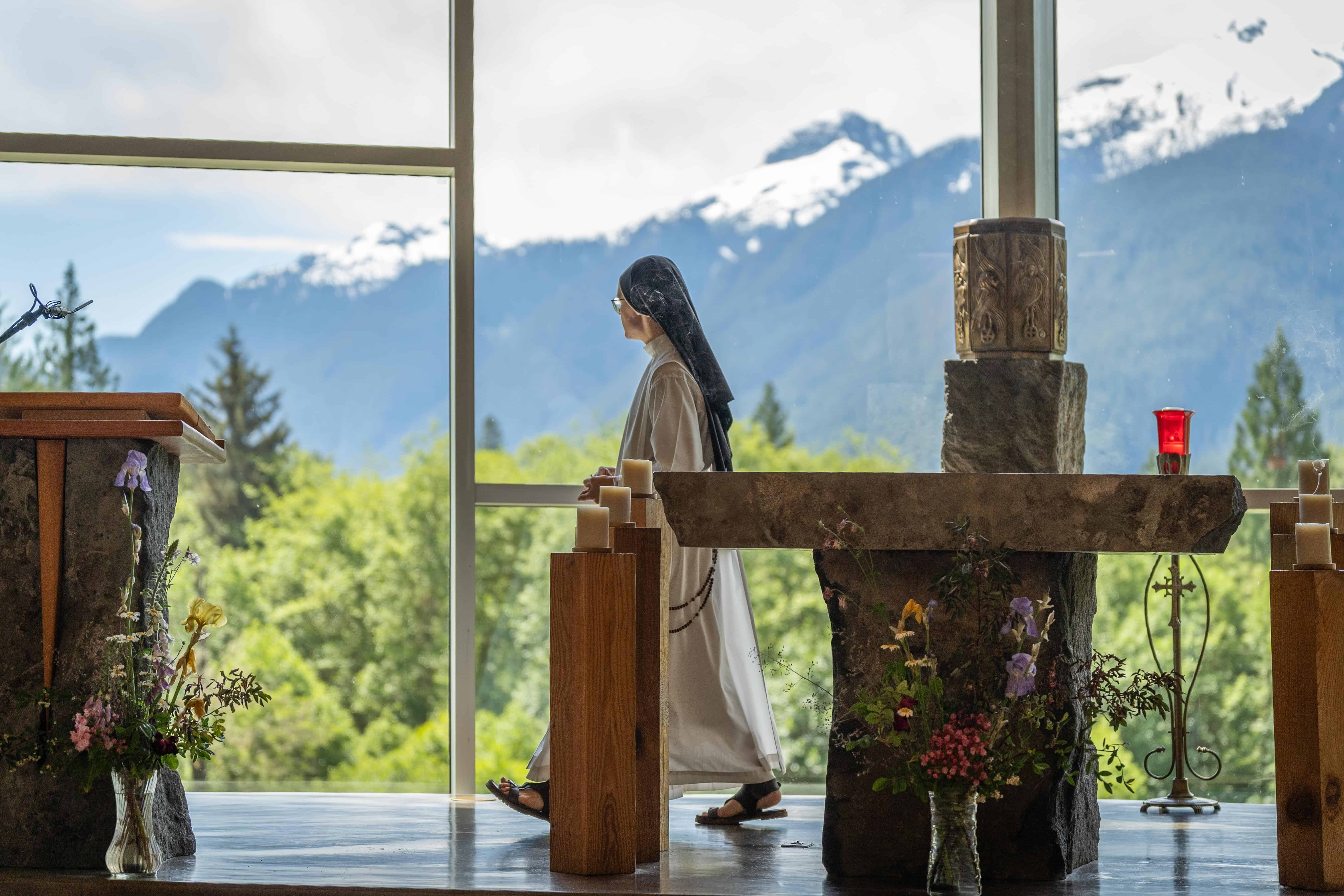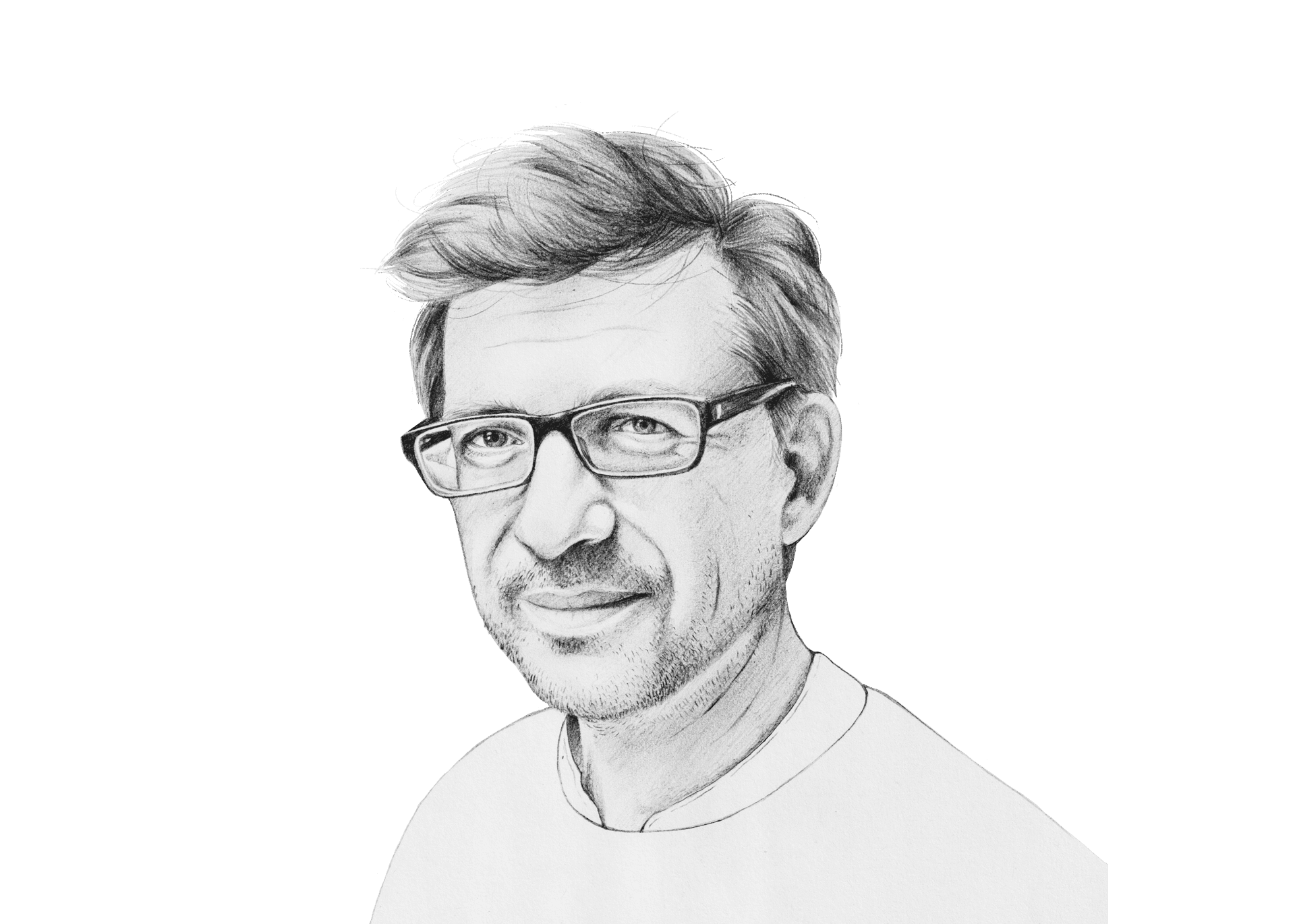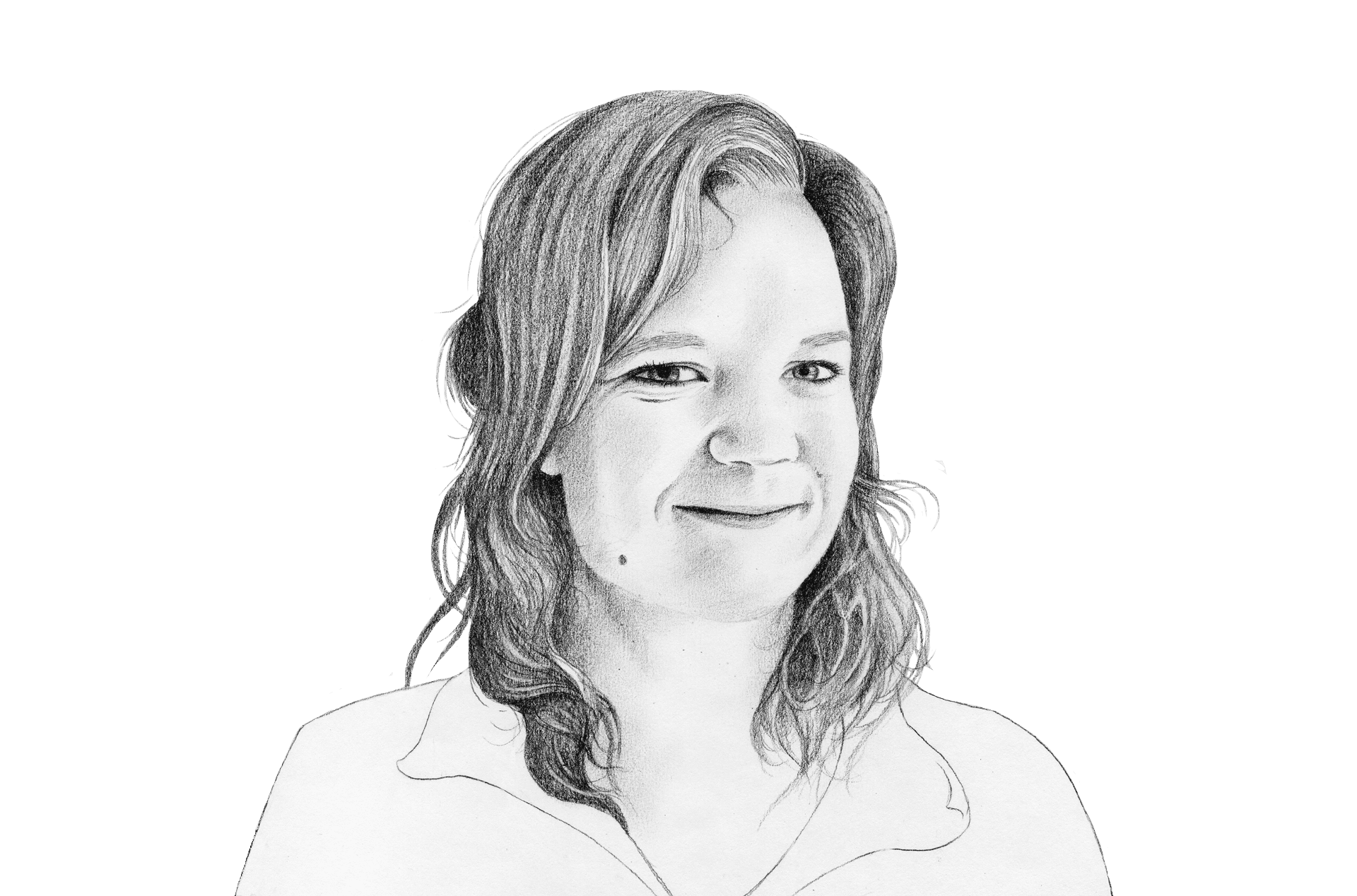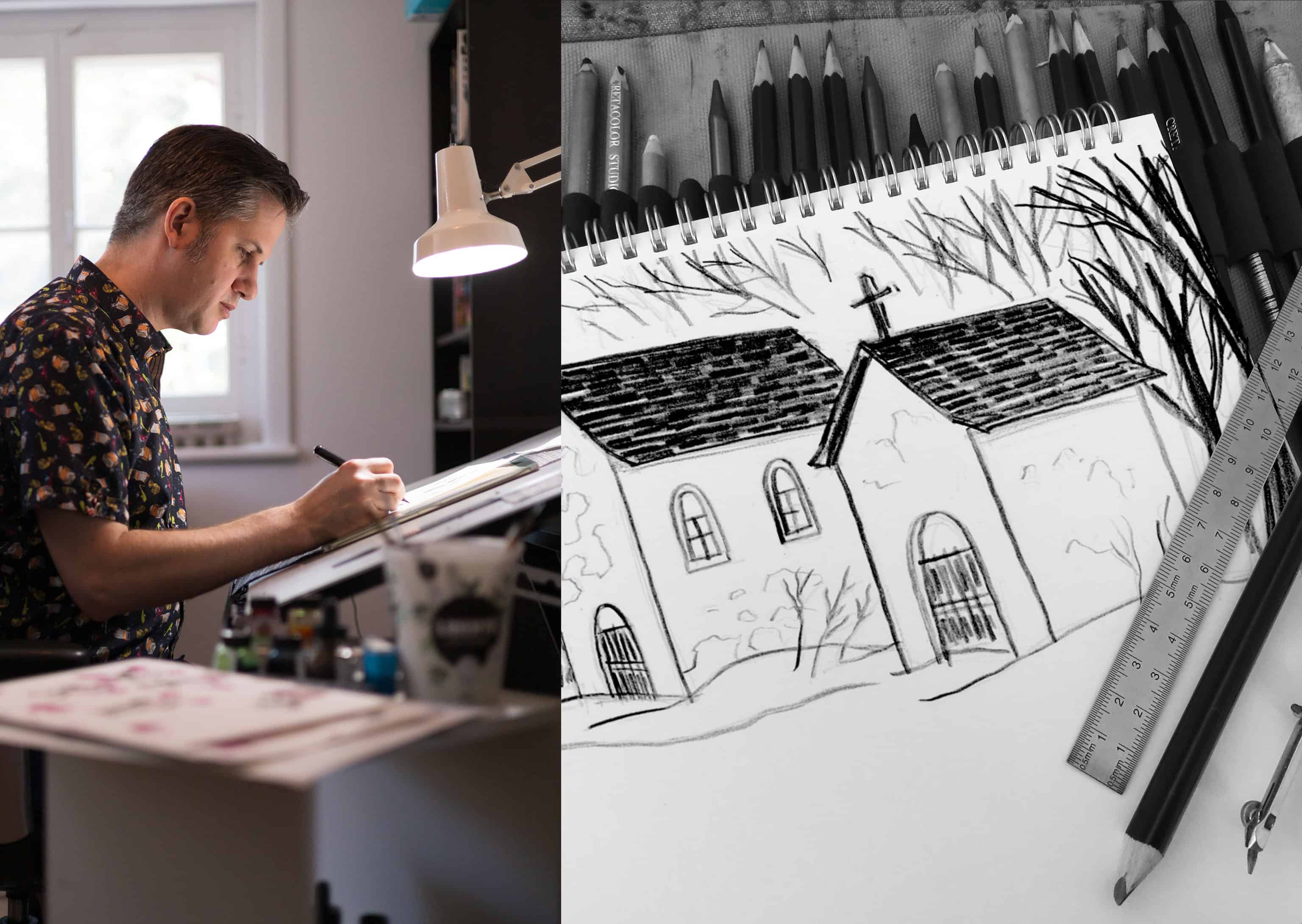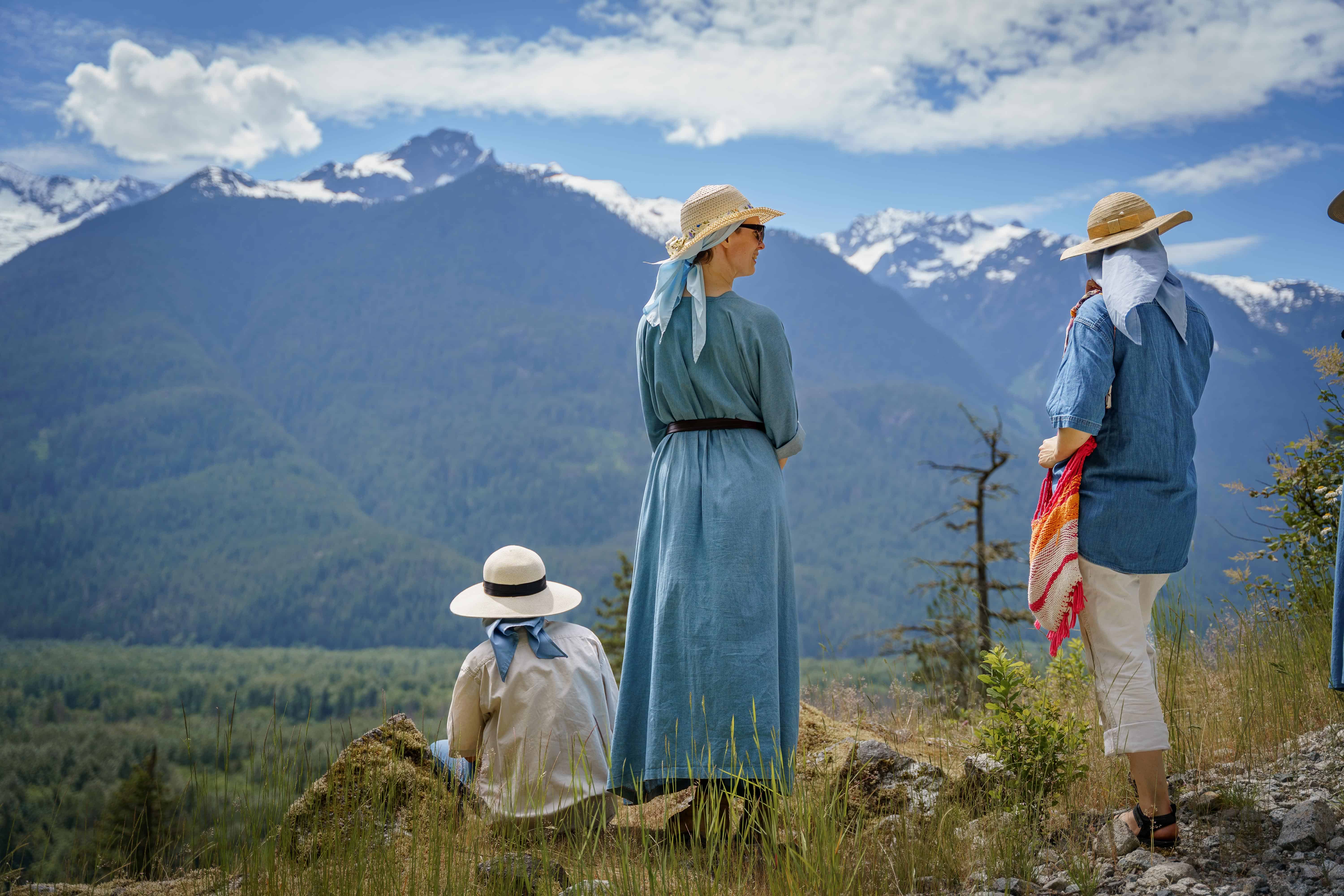
The Way of Life of the Dominican Nuns of Squamish
As we drive down the 14 km road leading to the Dominican nuns in Squamish, British Columbia, we lose our cell signal. It’s a sign that we are entering another space—a sacred space. Located at the foot of glaciers covered year-round with snow, Queen of Peace Monastery could not better live up to its name. Here, peace reigns. A peace that is not of this world.
“I have often thought that Europe has its cathedrals, but Canada has its untouched spaces of beauty that evoke the sacred just as much,” says Sister Claire Rolf. The prioress, or elected head of her community, she has always dreamed of creating an oasis of silence where one could make contact with God. That’s why, about 12 years ago, she and her sisters set out to build a new monastery nestled between the Pacific Ocean and the mountains north of Vancouver. Built in just 18 months with the help of young local architects, this structure made of wood, stone, and glass stands out as a remarkable work, inviting a contemplative and ecological way of life. It is now home to 17 sisters of the Order of Preachers.
Living Laudato Si'
Inside and outside the cloister, the scent of incense and wildflowers rises alongside the songs of birds and nuns—a hymn to creation. “Mountains and hills, bless the Lord; everything growing from the earth, bless the Lord” (Daniel 3:75-76). Day after day, through their work and prayer, the sisters preach by example that another relationship with nature and humanity is possible. “Here, we can plan for the very long term,” says Sister Claire. “A monastery can last for centuries, just like these giant sequoias we’ve planted. I will never see them reach maturity, but I rejoice for the generations that will behold them. It’s an act of hope.”
Just next to the monastery, a small hydroelectric plant appears near a waterfall. It provides the community with all the energy they need. At the end of the road, there is an organic vegetable farm. The nuns offer their land for free to local farmers in exchange for unsold fruits and vegetables from the market. “They have such respect for the earth. They help us live Laudato Si’,” says Sister Claire.
Sister Claire is referring to Pope Francis' 2015 letter on ecology, in which these Dominicans found confirmation of their holistic way of life. “Human communities and their cultures are inseparable from the environment in which they live,” explains Sister Elizabeth, who is completing a master's degree in integral ecology. “There is no separation, but an interconnection. They develop together. Nature influences our food, our homes, our work, and even our language. Everything is connected.”
A few of the sisters make candles or soap for sale. They try to meet their needs by creating quality products, but without overproduction or excessive profit. “We want to get rid of plastic,” says Sister Claire. “That’s why we wrap our soaps in recycled cardboard and are developing an excellent shampoo bar to avoid plastic bottles.”
Cry of the Earth and the Poor
Thomas, one of the organic farmers, is originally from Switzerland. He describes how this environment promotes healing. Volunteers come here to disconnect from the noise of the world and to reconnect with nature. In the fields, medicinal plants are also cultivated: echinacea, mint, chamomile, edelweiss. In June, myriads of pollen grains swirl in the air like divine manna. This summer “snow” evokes the surprising fruitfulness of these women dedicated to God.
At the heart of the garden a volunteer, Ruth, has planted willow trees to create a labyrinth. Walking along its circular path, one is drawn to meditate on the meaning of life. “Unlike mythological labyrinths,” explains Sister Claire, “Christian labyrinths draw a single path, and you never get lost. You simply take one step at a time, with trust in the One who has traced the path for us.”
Willow trees are used in medicine to reduce fever and pain. Modern aspirin actually originates from a property of willow bark. With these trees, Ruth also makes wicker coffins for the unclaimed bodies of men and women who have died of drug overdoses in downtown Vancouver. Through this act of mercy, she offers them a burial in recognition of the infinite dignity of every human person.
Filled with compassion, Sister Elizabeth recalls that the cry of the earth is inseparable from the cry of the poor: “How do we view creation? A global perspective calls for global justice. Our social problems are connected to our environmental problems. Climate change affects us all, but first and foremost and most severely, it affects the poor.”
Mother of the Wind
This harmonious relationship with nature was discovered by the nuns in Squamish, a town whose name in the Sḵwx̱wú7mesh language means roughly Mother of the Breath, or Wind. “For me,” whispers Sister Claire, “it is the Holy Spirit.” The town sits at the meeting point of warm air from the land and cold air from the sea, creating powerful winds. For centuries, the Indigenous peoples of the area have forged a resilient culture and an intense connection with creation. The longevity and fragility of the Upper Squamish Valley’s glaciers remind the nuns daily of the rich and vibrant culture that has existed here since time immemorial.
The Dominicans maintain good friendships with their closest neighbors from the Skwxwú7mesh Úxwumixw. After a church service in the town, an Indigenous woman was actually among the first to welcome the sisters to the area. Later, a local Indigenous spiritual leader came to bless the sisters' land, symbolically drawing a connection between the two religious traditions.
“Human communities and their cultures are inseparable from the environment in which they live, […] There is no separation, but an interconnection. They develop together. Nature influences our food, our homes, our work, and even our language. Everything is connected.”
– Sister Elizabeth
Creative Happiness
Throughout its 800-year history, the Order of Preachers has encouraged its members to share the fruits of their contemplation through the arts. The life of Fra Angelico, the renowned Dominican friar and Renaissance painter, testifies to this, and the tradition continues in Squamish. “We’ve always appreciated the gratuity of the arts,” says Sr. Claire. “I believe that when people are happy, they become creative.”
Sister Isabelle, the novice mistress responsible for initial formation, danced ballet in Lyon before entering the monastery. Young sisters Marie-Étienne and Elizabeth both studied fine arts. Sister Marie Thomas paints icons, while Sister Mary Magdalen practices and teaches wood carving. Sister Imelda Marie plays the violin, while other sisters play the cithar or the kora (a string instrument from Senegal) to accompany the monastery’s liturgy.
In the pottery workshop, Sister Marie-Étienne explains that craftsmanship is a way for her to refocus: “In a silent life, you are often faced with yourself. By concentrating on the work, art is a way of stepping outside of yourself.”
Internet at the Monastery?
The nuns each have a personal email address after their novitiate (the period of initial training), but they forego screens during the nighttime profound silence. They do, however, navigate the internet to work, study, or communicate with their loved ones. “We started doing Zoom calls with our families at Christmas,” says Sister Marie-Étienne, “because it’s the feast of the Incarnation, and it’s important to see each other.” The younger sisters are the ones who understand most spontaneously that new technologies can absorb us. “For my part,” she adds, “I really like contacting people by writing to them by hand. I find it more personal.” For the prioress, regulations aren’t enough to adjust one’s relationship to screens. “Our inner limits must be clear. We can’t rely solely on external boundaries, or we’ll always try to circumvent them. Where is my heart and my desires? I must remain honest with myself.”
Becoming Oneself
Although all the nuns wear the same habit (blue for work, black and white for prayer), they are far from being carbon copies of one another. The freedom and diversity of this group of women is striking. Sister Isabelle corrects a common prejudice: “People without faith sometimes think that we live like prisoners or people in a cult, and that we must renounce our personality. But that is the complete opposite of what we experience! When you give your life to God, you become yourself, much more than in any other life where you can hide behind a persona. In the monastery, you cannot escape who you truly are. Our order’s motto is “Veritas.” Here, we live the truth within ourselves.”
This quest for authenticity lies at the heart of Sister Marie Thomas’s journey: “In the world, you constantly have to promote yourself. You decide what you want to do and how you present yourself to others. It’s like a self-creation. Before, I worked in communications and marketing, and in that world, everyone creates their own ‘profile.’ But in the monastery, I have to accept the deconstruction of all these idols or false images of myself in order to be continually created by God. I don’t create myself. I accept being created as the woman God wants me to be. It’s the opposite of social media!”
For the novice mistress, it is essential to learn to base one’s life on something unshakable: “For us, it’s the love of God. It’s far beyond any human experience of love. It’s a gaze upon you that makes you exist, something you don’t deserve, and it lasts, despite all our flaws and mistakes. God doesn’t change. And His love for us will never pass away.” Much like those ever-present mountains that draw our eyes at all times of the day.
To the heights
But why do the mountains so captivate our gaze? In a world where everything changes so quickly, they offer an astonishing stability. Both transcendent and immanent in the life of human beings, they remain among us even though we can never fully conquer them. They remind us of what is essential: the spiritual life is a climb, even when the heights are hidden by clouds. Without losing sight of the summit, we persist. It’s the true aim of contemplation: to begin at the bottom, but to see everything from above, in God’s eyes.
For Sister Elizabeth, these peaks represent a space untouched by human activity, retaining an original purity. "We accept the high mountains as they are, without trying to change them. Their presence is a gift." They possess intrinsic value in and of themselves, whether or not they can be exploited or monetized. "This is a lesson for us humans, prompting us to reconsider our relationship with God's creation."
Sister Claire also finds a teaching for her monastic life: "These glaciers simply exist, at rest. They stand before us, available and pointing toward Heaven, like God inviting our contemplation. And from their apparent stillness and uselessness, springs nonetheless emerge, nourishing the valleys. To me, they are an image of prayer—remaining in the presence of God, seemingly 'wasting time,' but trusting that streams of living water will flow from it to irrigate, heal, and bring life to the world."
The Art of Prayer
The radiance of the nature surrounding the monastery wonderfully echoes the splendor of the Word of God that the sisters proclaim five times a day. Catholics, Orthodox, Protestants, Jews, and Muslims all come here to hear what they cannot hear elsewhere. Cyclists and persons of no particular religion also love to pause in the church and reflect. “Recently,” recounts Sister Claire, “a man hurriedly left the chapel, as if he were afraid. Seeing that he didn’t return, I went to meet him. He was a young American rabbi, an ex-football player with a strong build. He confessed that he had experienced such a strong emotion that he couldn’t contain himself. ‘Can you teach me to pray the Psalms like you do?’ he asked. Like Saint Dominic, he is now learning to pray with his body.”
But is there a special technique for prayer? “I wouldn’t call it a technique,” explains Sister Isabelle, “but an art of prayer. Saint Dominic wrote practically nothing and never gave us a technique. In our Order, there is an emptiness. And everything starts from this emptiness where one must be attentive and receive the Word of God. If there is one thing to do, it’s to allow this capacity for attention to be cultivated within ourselves. To have this inner space that allows us to be attentive to God and to our sisters.”
The art of prayer takes different forms. Sister Isabelle elaborates: “In lectio divina, I realize that there is someone speaking just for me, and that someone is God. In the liturgy, I become aware of carrying humanity into a space where Heaven and Earth meet. In the psalms, what’s striking is that there are many prayers of distress. It’s the privileged place where I support my brothers and sisters who suffer. Contemplative prayer, on the other hand, is an act of presence. It is, above all, the place where one ‘does’ nothing but be in silence. And for us Dominicans, there is also study, which is a form of prayer and a means of deepening the mystery of God. In short, our life is really about being soaked in the Word of God.”
“My greatest joy,” confides Sister Marie-Étienne, “comes from the fact that monastic life is completely oriented toward God. Even if my heart is not always with God, it is always redirected in the right direction. I can’t get lost for too long. The community also helps me to find myself, because in solitude one risks getting lost in one’s own thoughts or worries.”
The Harmony of Charity
The 17 sisters of Squamish come from diverse generations, languages, and cultures: France, the Philippines, Vietnam, Rwanda, English and French Canada, and the northern and southern United States. How do they succeed in creating unity amidst such diversity? “Our first challenge,” admits Sister Claire, “will always be to build our community by circulating charity. But I don’t think there’s a technique for that. It’s listening, especially patience…and recognizing our fears. We must create an emotional climate of safety. If there’s too much pressure for perfection or too much judgment, the sisters retreat and hide what they truly have in their hearts.”
“Fraternal life is like an orchestra,” says Sister Isabelle. “The flute can’t be the drum. If one instrument dominates the others or is always in the center, it’s no longer an orchestra. Harmony arises from listening to each other and from sharing each person’s gifts. When the members of a community are happy and united, one can perceive the harmony.” “Here,” adds Sister Claire, “fraternal life is very beautiful…and fun too!” Even from the other side of the cloister, one can often hear the sisters singing and laughing heartily during their recreation times.
“We must believe in the mystery of fruitfulness—that what happens on the small scale of our community can bear fruit for the entire world,” says Sister Claire. “To believe that the acquisition of the Holy Spirit by one person can save a multitude. Either you believe this, or you don’t. But if you do, our life finds its full meaning.” A meaning revealed in the name of the monastery: Queen of Peace. “Peace is such an important challenge for our time,” she concludes. “Yes, we pray for peace, but we especially try to live peace between ourselves, with our Indigenous sisters and brothers, and with all of creation.”
From the chapel to the glaciers, one can hear the sisters chanting: “Mountains, bring forth peace for the people” (Ps 72:3).

